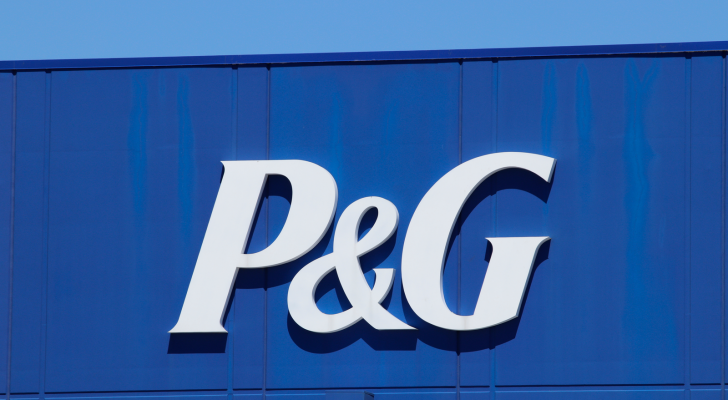How to Build a Bear-Market Proof Portfolio: 7 Top Picks
The stock market is in the final quarter of 2023, and it’s been a bumpy ride so far. Geopolitical tensions, rising inflation, and elevated interest rates remain significant obstacles. It’s difficult to feel bullish in this environment, but every investing environment has opportunities. Stocks for a bear market proof portfolio have the potential to outperform stock market indices that are more vulnerable to market downturns. Reviewing previous bear markets and consumer behavior can lead to clues about which assets will generate returns in the future.
Bullish investors can still hold onto growth stocks if they have 10, 20 and 30-year horizons. If you are a long-term investor, you have to navigate various bumps in the road. It’s important for long-term investors with those time horizons to maintain their convictions unless the fundamentals significantly change. Investors can build bear market proof portfolios with these seven top picks.
iShares Gold Trust (IAU)

Source: aerogondo2 / Shutterstock.com
The iShares Gold Trust (NYSEARCA:IAU) gives investors exposure to the price movement of gold bullion. Some gold ETFs focus on gold miners, but these miners have varying financial success. IAU rewards investors if gold appreciates.
InvestorPlace - Stock Market News, Stock Advice & Trading Tips
Gold is one of the best inflation hedges that has withstood thousands of years. The precious metal has outlived every fiat currency and remains integral to our society. A chart comparing the price of gold to real estate truly captures the asset’s inflation resistance. In 1889, you needed 338.07 ounces of gold to buy an average single-family house. Today, due to a recent rally in gold, you need fewer than 300 ounces of gold to buy an average single-family house. Houses have become cheaper in the past 134 years if you stored gold and received payments in gold.
That type of inflation protection is critical as CPI came in hotter than expected. While many investors view gold as a haven during uncertainty, IAU has performed well during the bullish market. Shares have gained more than 50% over the past five years.
Exxon Mobil (XOM)

Source: Jonathan Weiss / Shutterstock.com
Ongoing geopolitical tensions can lead to oil shortages that keep oil prices elevated. The world relies on oil for transportation and other uses. Companies like Exxon Mobil (NYSE:XOM) benefit from higher oil prices since they can charge more money for their oil inventory.
Exxon Mobil hasn’t had the most successful 2023. Shares are only up by 3% year-to-date, but the 3.30% dividend yield helps. Shares have appreciated by 34% over the past five years. Exxon’s ongoing acquisition of Pioneer Natural Resources (NYSE:PXD) can expand the company’s market share and lead to higher returns for shareholders.
Multiple analysts have predicted oil can reach $150 per barrel. The U.S. Strategic Petroleum Reserve is running out and doesn’t give the government as much flexibility to influence oil prices. This setup creates an opportunity for Exxon Mobil shareholders. Higher oil prices hurt almost every stock other than the oil giants. When considering stocks for a bear market, remember Exxon Mobil for being a reliable name in the industry that is pursuing enticing growth opportunities.
Visa (V)

Source: Kikinunchi / Shutterstock.com
Visa (NYSE:V) makes money from credit cards, debit cards and other financial products. The company is engrained in society with over 2.9 billion debit cards issued worldwide. The company has a good history of growing its dividend and has a 30 P/E ratio.
Visa stock has been a steady performer, with shares up by 15% year-to-date. V stock has gained 70% over the past five years. Visa isn’t the type of stock to outperform during a bullish market, but it has a good moat and strong demand. Those two factors can keep the stock’s price elevated or minimize the decline during economic uncertainty.
The corporation enjoys some of the best profit margins in the industry. The company’s net profit margin was above 50% in the fiscal third quarter. Visa’s revenue and earnings both grew by double-digits year-over-year.
Visa is among the stocks for a bear market that are positioned to flourish in the years ahead. It is well-equipped to navigate market volatility. Its attractive financials and low P/E ratio compared to Mastercard (NYSE:MA) make it a compelling pick to consider.
Alphabet (GOOG, GOOGL)

Source: Koshiro K / Shutterstock.com
Alphabet (NASDAQ:GOOG, NASDAQ:GOOGL) is the largest search engine on the web. Demand for Google and YouTube will remain strong in any economy, and that means plenty of ad dollars. A recession can force businesses to temporarily pull back on their advertising. However, the company’s search engines will remain popular. When the market goes back to being bullish and advertisers have more money to spend, they will turn to Alphabet.
The company has also made great strides in other business verticals, such as Google Cloud. Revenue from this segment grew by 28.0% year-over-year and helped fuel the company’s 13% year-over-year overall revenue growth. Alphabet’s main revenue source, Google Advertising, experienced 3.3% year-over-year revenue growth. The company’s stock has rewarded long-term investors. Shares are up by 54% year-to-date and have gained 152% over the past five years.
The stock has recovered most of its 2022 losses and currently trades at a 30 P/E ratio.
Costco (COST)

Source: ilzesgimene / Shutterstock.com
When recessions unfold, consumers look for opportunities to save money. People turn to wholesale corporations like Costco (NASDAQ:COST) to buy various goods and services at lower prices. Costco can grow its market share as consumers look for more affordable options. Members may do more of their purchasing in Costco instead of shopping at more expensive retailers. The company has a good customer base to tap into these trends and reward long-term investors.
Over 127.9 million people are Costco members. The company is spread out across 862 warehouses, including 592 locations in the U.S. and Puerto Rico. Costco generated $237.7 billion in revenue for Fiscal Year 2023.
The company’s Fiscal Year 2023 was 53 weeks compared to a 52-week Fiscal Year in 2022. Sales went up 6.7% year-over-year. Costco shares have gained 25% year-to-date. The stock is up by 147% over the past five years. It also offers a 0.70% dividend yield which isn’t the highlight but serves as an extra perk.
Proctor & Gamble (PG)

Source: Jonathan Weiss / Shutterstock.com
Proctor & Gamble (NYSE:PG) is a consumer goods conglomerate that has been a steady performer for most of its history. Shares are up by 65% over the past five years but are down by 4% year-to-date. The company’s stock had been a positive returner for most of the year before a mid-September drop. Because of this drop, shares now trade at a 24.5 P/E ratio and offer a 2.60% dividend yield.
The company reported 5% year-over-year revenue growth in the fourth fiscal quarter. This revenue growth represents an acceleration from the company’s year-wide 2% year-over-year revenue growth. Net income grew by over 10% year-over-year.
The company sells many essential consumer goods that people will continue to buy during a recession. People target their discretionary spending first and trim those costs to focus on the essentials. Proctor & Gamble sells many essential goods which makes it more resistant to a recession than most stocks for a bear market.
Waste Management (WM)

Source: shutterstock.com/PhotoByToR
Waste Management (NYSE:WM) is the type of boring stock that doesn’t generate big gains but won’t fall off a cliff during economic slowdowns. People will accumulate waste in any economy, and Waste Management picks it up.
Shares have only gained 1% year-to-date but are up by 75% over the past five years. The company also offers a 1.75% dividend yield at its current price. The company hiked its quarterly dividend from 65 cents per share in 2022 to 70 cents per share in 2023. The dividend hike represents a 7.7% year-over-year increase.
When compared to other stocks for a bear market the company doesn’t seem like it warrants much attention. Waste Management doesn’t report ground-breaking financials, but the company’s numbers don’t fluctuate much either. However, this setup creates more stability for investors compared to growth stocks. In the second quarter, Waste Management maintained a double-digit profit margin built on single-digit year-over-year revenue and earnings growth.
Waste Management has demonstrated the ability to reward long-term investors, and it isn’t an asset that has more resistance to economic downturns. Various growth-oriented corporations could go out of business and quickly get replaced. If Waste Management ever went out of business, the entire world would know. Its service is integral to removing waste across North America.
On this date of publication, Marc Guberti held a long position in IAU. The opinions expressed in this article are those of the writer, subject to the InvestorPlace.com Publishing Guidelines.
Marc Guberti is a finance freelance writer at InvestorPlace.com who hosts the Breakthrough Success Podcast. He has contributed to several publications, including the U.S. News & World Report, Benzinga, and Joy Wallet.
More From InvestorPlace
ChatGPT IPO Could Shock the World, Make This Move Before the Announcement
Musk’s “Project Omega” May Be Set to Mint New Millionaires. Here’s How to Get In.
The Rich Use This Income Secret (NOT Dividends) Far More Than Regular Investors
The post How to Build a Bear-Market Proof Portfolio: 7 Top Picks appeared first on InvestorPlace.
